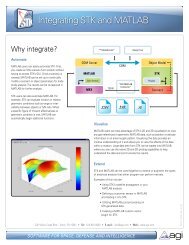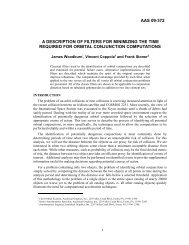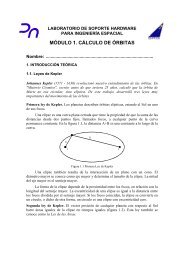SPACE WEATHER - AGI
SPACE WEATHER - AGI
SPACE WEATHER - AGI
- No tags were found...
Create successful ePaper yourself
Turn your PDF publications into a flip-book with our unique Google optimized e-Paper software.
Section III: Thermal Effects© SSS Educational Series 2012Section III: Thermal Effects1. IntroductionThermal effects can adversely affect both humans in space and space systems, whichinclude satellites, probes and the International Space Station. The predominantsource of thermal effects within our solar system is the sun. The sun plays a vital rolein renewable energy production on Earth and for powering satellites in Earth orbit;however, it can also have adverse effects to both space systems and humans.2. Thermal Sources in Space2.1 Electromagnetic Radiation from the SunThe sun is a G2V star designated as a yellow dwarf and is located in the center of oursolar system about 150 million kilometres away from the Earth. It is composed of74% hydrogen, 24% helium and the remainder is a mix of oxygen, carbon, iron, neon,nitrogen, magnesium, silicon and sulphur [1]. The sun is approximately 109 times thesize of the Earth and it accounts for 99% of the mass within our solar system [1].There are 9 different regions within the sun, which are [1, 2]: the 1) Core, 2) RadiativeZone, 3) Convective Zone, 4) Photosphere, 5) Chromosphere, 6) Corona, 7) Sunspot,8) Granules and 9) Prominences (Figure 10).Figure 10. The Sun has 9 different regions which include: 1) Core— —where nuclearfusion occurs, 2) Radiative Zone—solar energy is transferred outwards via thermalradiation (also generates a magnetic dynamo which creates the suns magnetic field),3) Convective Zone—thermal columns carry hot material to the surface(photosphere) by convection, 4) Photosphere—the the visible surface of the sun,22

















